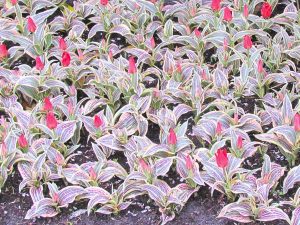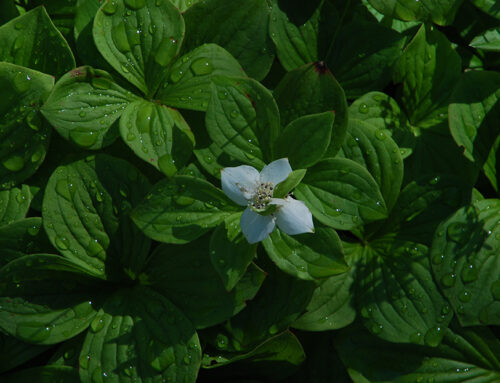Tulips: Tips From A Zone 3 Garden
Text by Lucy Chang, Photos by Richard Knapton.
Peony Flowered Tulips
About Tulips
Tulips in show gardens are planted fresh every fall. This is the only way to have a reliable floral display every season. Gardeners replace spent bulbs with healthy fresh bulbs, selected for size and uniformity, colour theme and/or specific attributes of the cultivars (striped, fringed or flamed petals).
It helps to know the types of tulips that you are planting: species or hybrids; early, mid-season or late bloomers.
In their natural habitat (temperate Europe, Asia and the Middle East, from gravelly ground at sea level to steppes and alpine conditions, usually in open environments) species tulips bloom in the spring, rebuild energy in the bulbs through the leaves before they turn brown and drop off, and then the bulbs rest underground in dry summer conditions. The bulbs go dormant in winter and wake up ready to bloom in spring. Species tulips are perennial performers (e.g. Tulipa tarda, T. fosteriana, T. kaufmanniana). Hybrids or cultivars that retain major characteristics of the species parent will reliably return and bloom every year. They are generally early bloomers. Hybrids that are far removed from species tulips may bloom only one year. Others peter out after the second season.
Tulips in Zone 3

T. “Vincent van Gogh”
In our short growing season, with unpredictable frosts, tulip bulbs do better planted much earlier in the fall than instructed in the package. The bulbs need to develop roots in cool moist soil condition before the ground turns cold and dry, and the soil become less friable. The roots will pick up moisture and nutrients and trigger bud formation. Then in response to falling temperature, the bulbs will prepare for dormancy. If they do not develop proper dormancy, the bulbs will die in our extreme winter temperature or rot in cold soggy ground.
Due to the influence of climate change, winter may swing straight into summer in terms of temperature, and shrubs and trees will leaf out earlier than expected. This can impact late-blooming tulips planted in the shadow of the shrubs or trees.
Repeat freezing and thawing is hard on bulb dormancy. If fooled into breaking dormancy too early, the next freeze may kill the bulbs. Some tulip experts advised planting tulips deeper than recommended in the package so that mid-winter thawing will not affect dormancy.
Plant tulips in well-draining soil. Rapid snow melt following a winter of extreme snow fall may produce prolonged waterlogged condition that could be detrimental to the bulbs.
Tulips are usually planted in perennial beds. If these beds are regularly watered and fertilized throughout the growing season, the bulbs may forego resting and develop baby bulbs that may not mature to blooming stage for several growing seasons. The mother bulbs become smaller from depleted energy. Depending on the type of tulips you plant, this may explain why flowers become smaller or fail to bloom in later seasons. Lifting the bulbs after the leaves have faded and allowing them to rest in a shady dry place before replanting in the fall is one way to retain the flowering vigour of the mother bulbs.
After Blooming

Tulipa greigii cultivar
Deadhead the flower after it fades to direct the plant’s energy to recharging the bulb, not nurturing seeds. Allow the leaves to fade naturally and go brown and limp. The green leaves are necessary to manufacture food for the bulb.
Last but not least, a very good reason for no-show tulips could simply be your local common wildlife. Mice, voles, raccoons or squirrels all could feast on the bulbs. Rabbits have nibbled emerging tulip shoots to soil level in my garden. With that development cycle broken, those particular bulbs never performed as well again.
I hope you have enjoyed this electronic “tip-toeing through the tulips” with me. Until the next stop, have a great spring!
Lucy Chang was a past EHS President and avid gardener.
















